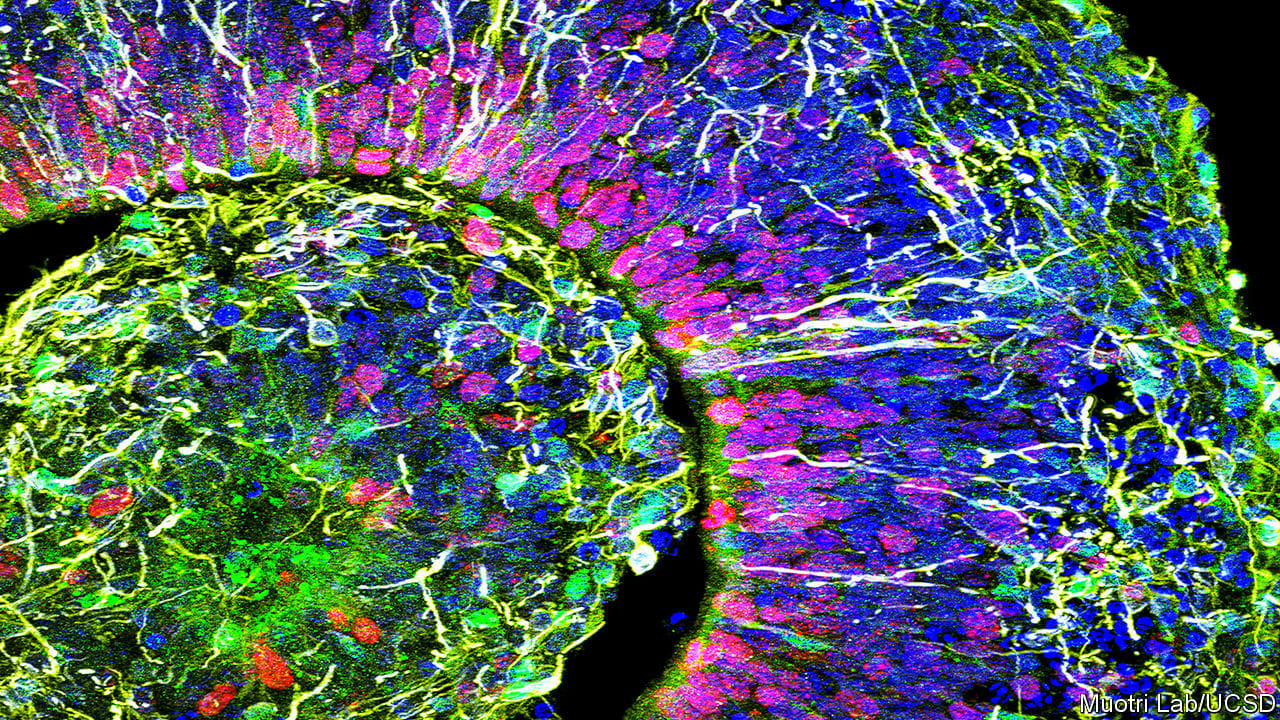- by
- 07 24, 2024
-

-
-
Loading

Loading

AT WHAT POINT does a mass of nerve cells growing in a laboratory Petri dish become a brain? That question was first raised seriously in 2013 by the work of Madeline Lancaster, a developmental biologist at the Medical Research Council’s Laboratory of Molecular Biology, in Cambridge, Britain. That year Dr Lancaster and her colleagues grew the first human-derived “cerebral organoid”. They did so using pluripotent human stem cells, which are cells that have the potential to develop into any type of tissue in the human body. The researchers coaxed these cells into becoming nervous tissue that organised itself, albeit crudely, as structures which had some of the cell types and anatomical features of embryonic human brains.